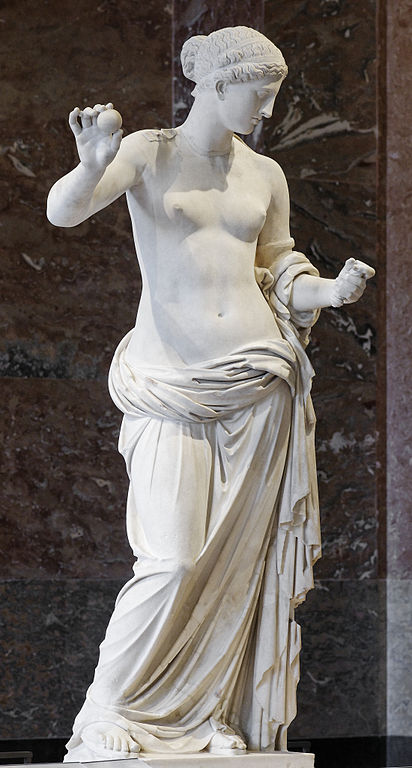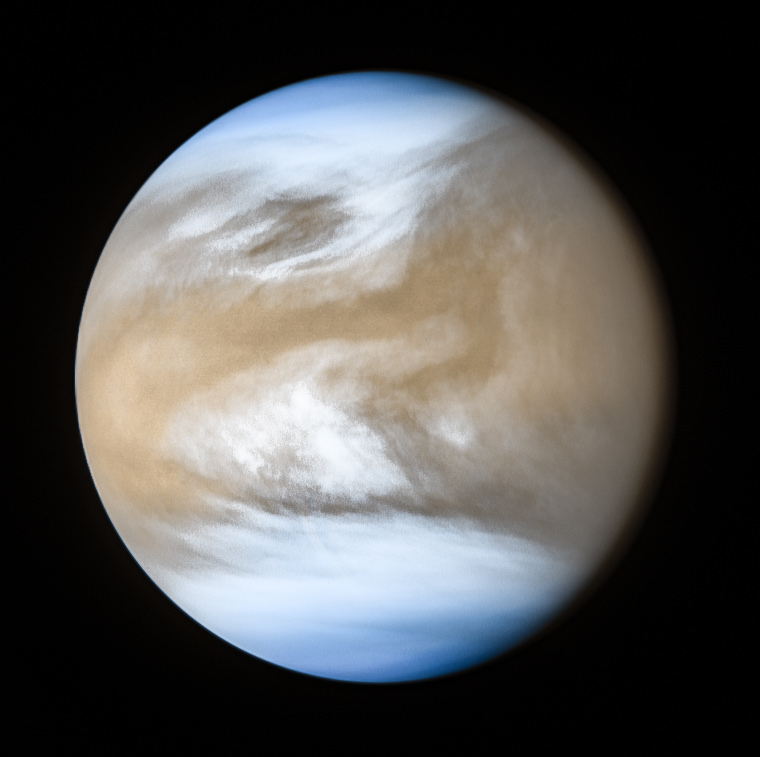
Venus, the second planet from the sun, orbits the sun in between the Earth and Mercury. One revolution of Venus around the sun lasts 224.7 Earth days. The planet was named after the ancient Roman goddess of love and beauty. The Greek counterpart is Aphrodite. The astronomical symbol for Venus resembles the one for Mercury, only without the horns. It is also the symbol for the female gender.

Venus rotates in retrograde motion, that is, in the opposite direction from that of most planets. So, someone on Venus would witness the sun rising in the west in the morning and setting in the east in the evening. Lacking a magnetic field, Venus has no defense against solar winds and solar radiation.
Venus is at its most distant point from the sun when it is about 68 million miles away (about 109 million kilometers). Its closest point to the sun is at about 67.2 million miles away (107,477,000 kilometers).
Of the four inner planets, Venus has the densest atmosphere. The surface air pressure on Venus is 92 times more than that of the Earth's. This pressure would be the equivalent of that at 3000 feet (900 meters) below sea level on Earth. The planet is enrobed in clouds of sulfuric acid. Those clouds obscure visibility so that its surface can not be seen from space. 96.5% of the atmosphere consists of carbon dioxide and 3.5% of it consists of nitrogen. There are traces of other gases, most notably, sulfur dioxide. In the 20th century, the Soviet Venera probes detected the existence of lightning and thunder. The European Space Agency's Venus Express probe confirmed the existence of lightning on Venus in 2007.
Venus is approximately the same size as the Earth. It has a diameter of 7520.8 miles (12,103.6 kilometers). That is almost 400 miles less than the diameter of the Earth. The plane has two highland land masses which resemble continents. One is north of the equator and is roughly the same size as Australia. Astronomers have named it Ishtar Terra. (Ishtar is the Babylonian goddess of love.) The planet's largest mountain, Mazwell Montes, is in Ishtar Terra. It is approximately 7 miles (11 kilometers) high. The other highland land mass is south of the equator and is approximately the same size as South America. It is called Aphrodite Terra. The rest of the planet is covered with volcanic plains. Most of the plains are wrinkled. About 10% of the surface consists of smooth plains. Volcanic activity on Venus is far more prevalent than on Earth. There are 167 large volcanoes. Each is about 62 miles (100 kilometers) across. The gravity on Venus is about 90% of that on Earth.
The planet's surface is isothermal. This means that temperature on Venus is roughly the same all over the planet. There is no significant difference between night and daytime temperatures. Only significant differences occur between temperatures at higher and lower altitudes. The coolest point on Venus is, therefore, Maxwell Montes. It is 715 ºF (380 ºC). The temperature on most of the planet is about 872 ºF (467 ºC). There are some hot spots on the planet near the volcanoes which might have temperatures as hot as 1520 ºF (827 ºC).
The Simba Pillow equipped with adjustable high & firmness plus temperature regulation. Shop Now.

